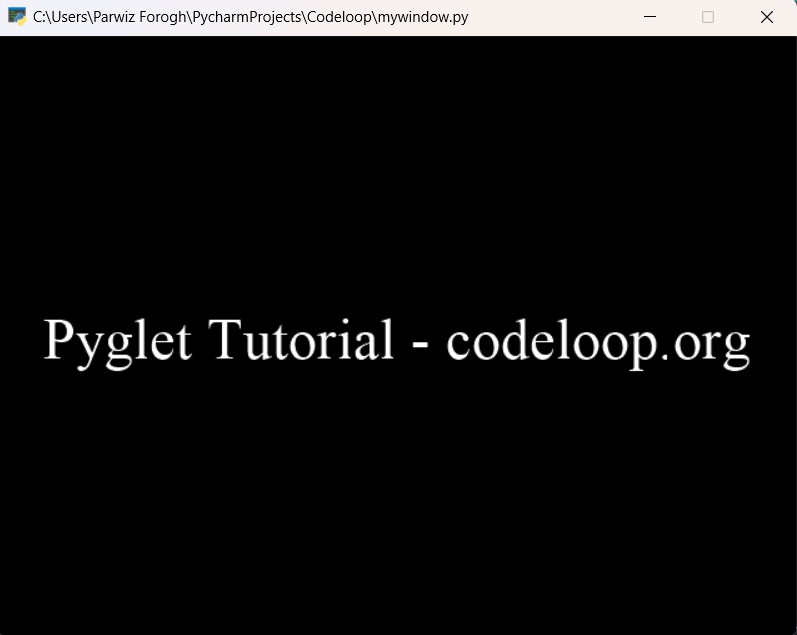In this Python Pyglet article we are going to learn How to Create Window in Python Pyglet. so first of all what is Pyglet, first we need to talk about Pyglet, after that we are going to talk about installation of Pyglet and at the end we created a simple window example in Python Pyglet.
What is Pyglet in Python?
Pyglet is a cross-platform multimedia library for Python, and it is used for developing games, multimedia applications, simulations and interactive experiences. It provides an easy interface for handling graphics, sound, input devices and windowing.
Python Pyglet Features
Pyglet is cross platform multimedia library for Python that is primarily designed for developing games and other multimedia applications. these are some of the key features of Pyglet:
-
- Graphics: Pyglet provides a flexible graphics module for rendering 2D and 3D graphics. It supports OpenGL for hardware-accelerated rendering and includes features such as sprites, textures, batch rendering and shaders.
- Windowing: Pyglet allows you to create and manage windows for displaying graphics and handling user input. It supports multiple windows, window resizing, fullscreen mode, and event-driven input handling.
- Audio: Pyglet includes a powerful audio module for playing and manipulating sound effects and music. It supports different audio formats and provides features for streaming, positional audio and sound synthesis.
- Input Handling: Pyglet provides support for handling user input from keyboards, mice, joysticks, and other input devices. It offers event-based input handling and supports customizable key bindings.
Python Pyglet Installation
You can simply install pyglet using pip command.
|
1 |
pip3 install pyglet |
How to Create Window in Python Pyglet
We already have talked about Python Pyglet, now it is time to create our window in Python Pyglet. so now this is the complete code for How to Create Window in Python Pyglet
|
1 2 3 4 5 6 7 8 9 10 11 12 13 14 15 16 17 18 19 20 21 22 23 |
import pyglet # Create window object window = pyglet.window.Window() # Create text label label = pyglet.text.Label("Pyglet Tutorial - codeloop.org", font_name='Times New Roman', font_size=35, x=window.width / 2, y=window.height / 2, anchor_x='center', anchor_y='center') # Event handler for drawing @window.event def on_draw(): # Clear the window window.clear() # Draw the label label.draw() # Start the application event loop pyglet.app.run() |
So in the above code first we have imported pyglet in the second line of the code we have created the object of window by using pyglet.window.Window(), also we are going to create a label in the pyglet window so you can use pyglet.text.Label() and we add some information for our label like the text of label, font type, font size, font name and the x and y position of label, also we need to override on_draw() method , in that method we clear the window and we draw the label on window. at the end we run our pyglet application by using pyglet.app.run()
Run the complete code this will be the result

FAQs:
What is pyglet in Python?
Pyglet is Python library for developing games, multimedia applications, simulations and interactive experiences. It provides tools and functionalities for handling graphics, sound, input devices and windowing. Pyglet is cross-platform and supports different operating systems such as Windows, macOS, and Linux.
How to learn pyglet?
To learn pyglet, you can follow these steps:
- Read the documentation: Start by reading official documentation available on the pyglet website. It provides a lot if guides, tutorials and API references to help you get started.
- Explore examples: Experiment with the example code provided in the documentation and explore the source code of existing pyglet projects on platforms like GitHub.
- Practice with small projects: Start with small projects to familiarize yourself with pyglet’s features and workflow. Create simple games, animations or interactive applications to practice different aspects of pyglet.
- Join the community: Join online forums, discussion groups or social media communities dedicated to pyglet development.
Subscribe and Get Free Video Courses & Articles in your Email